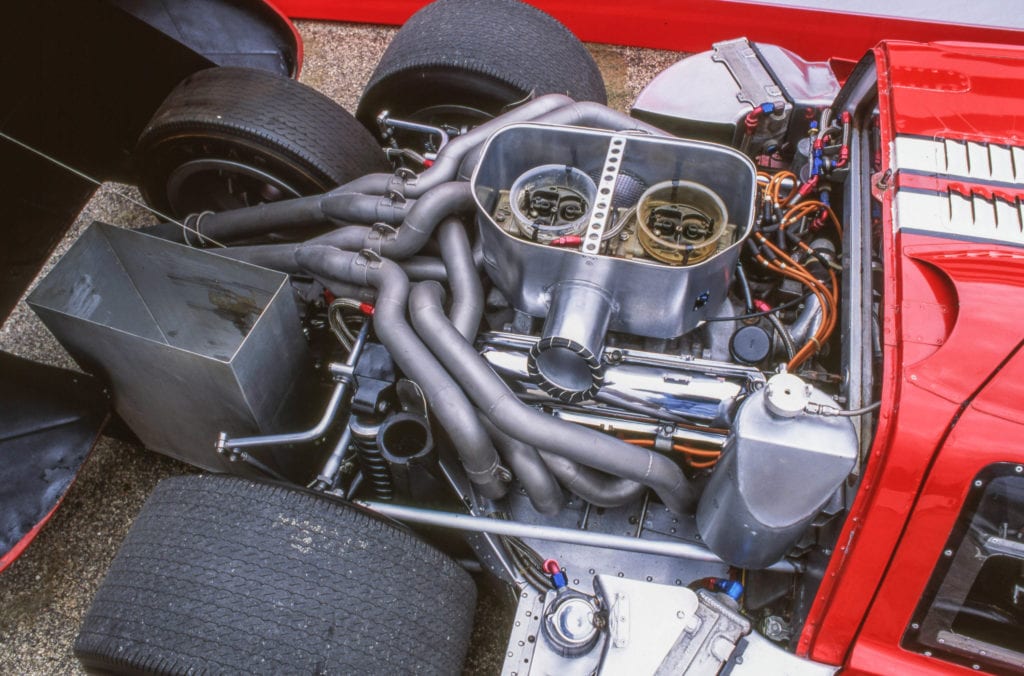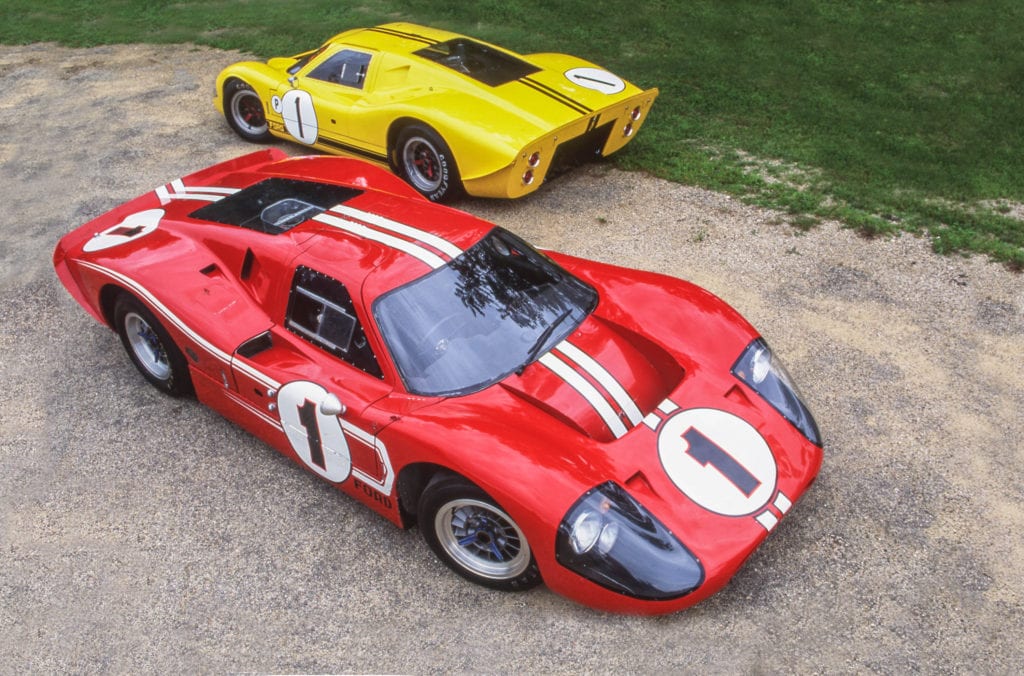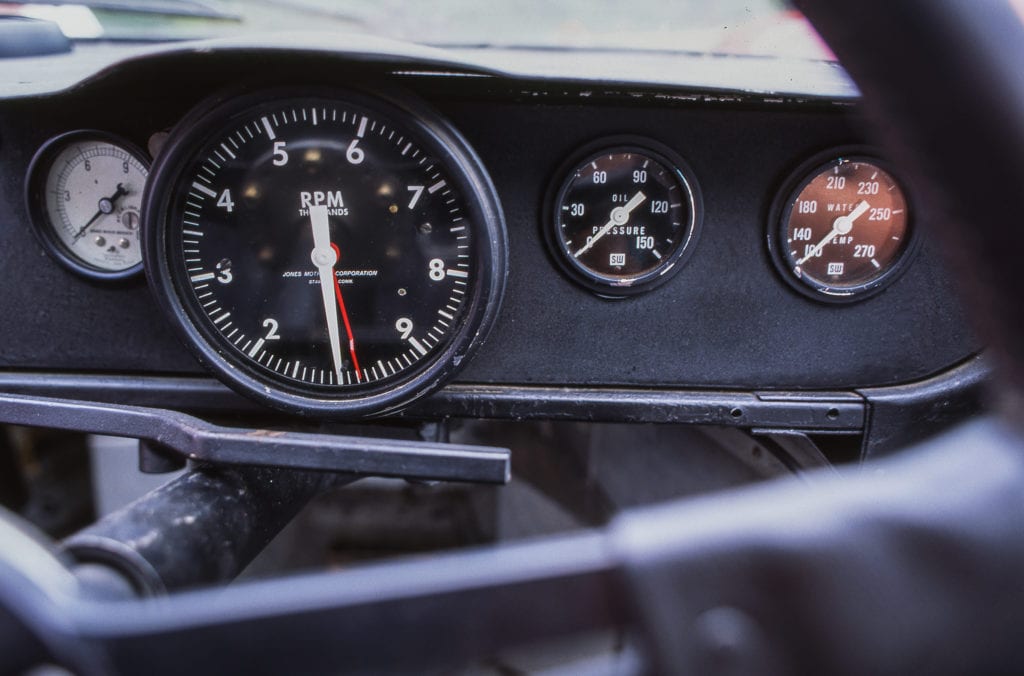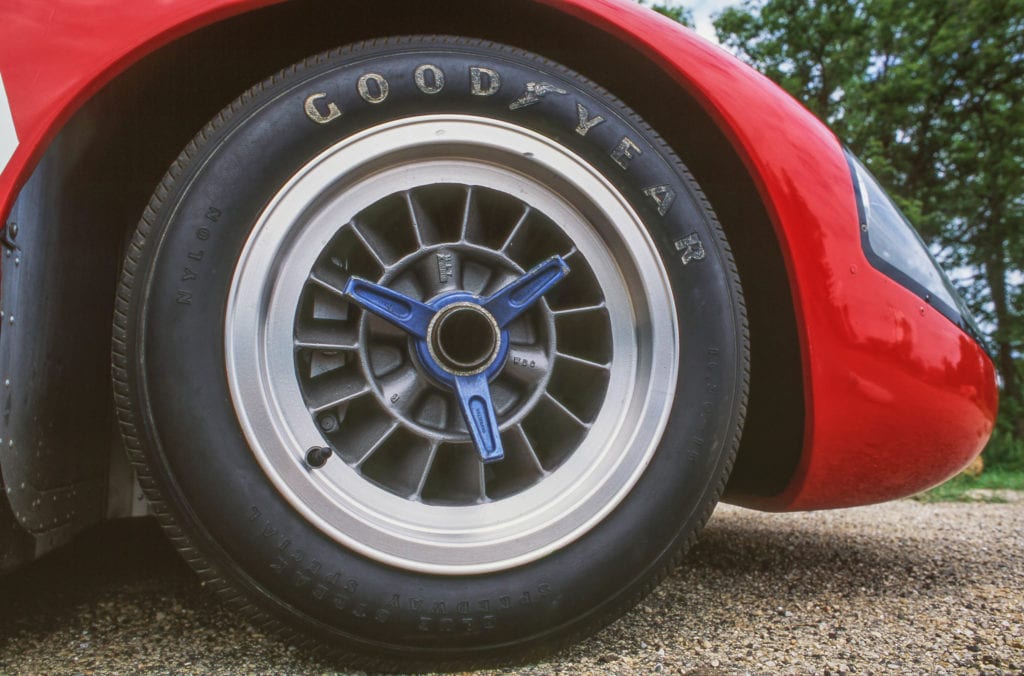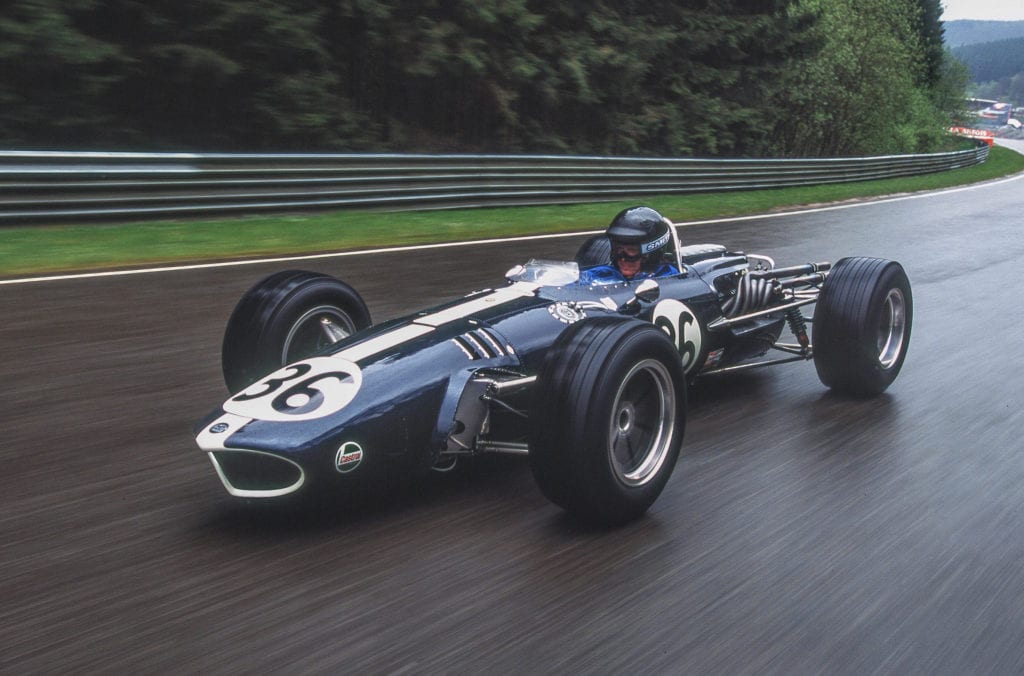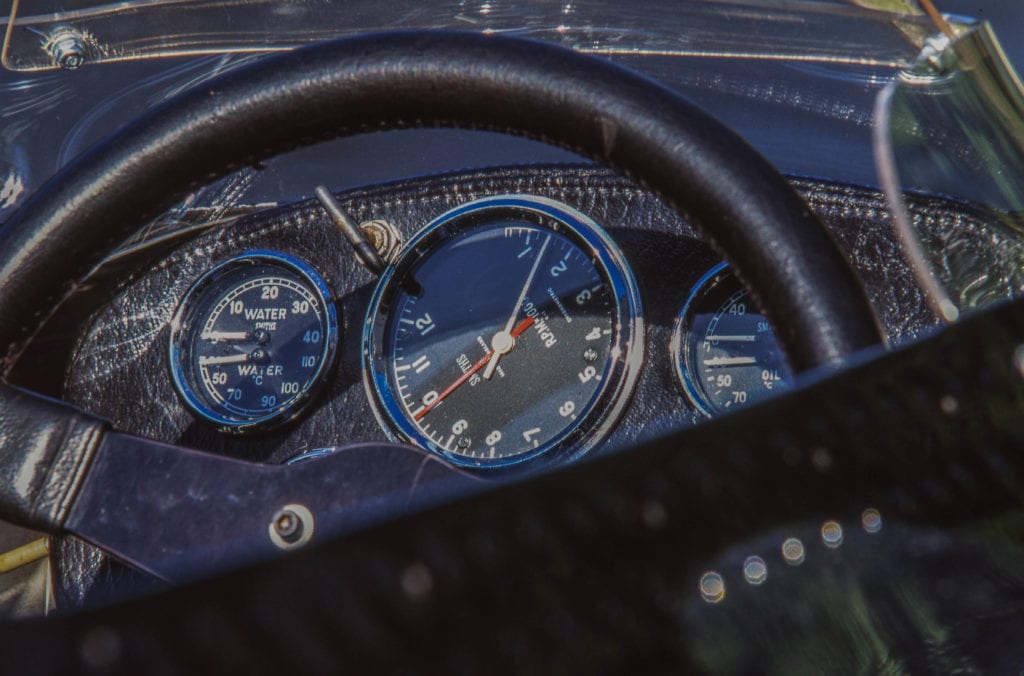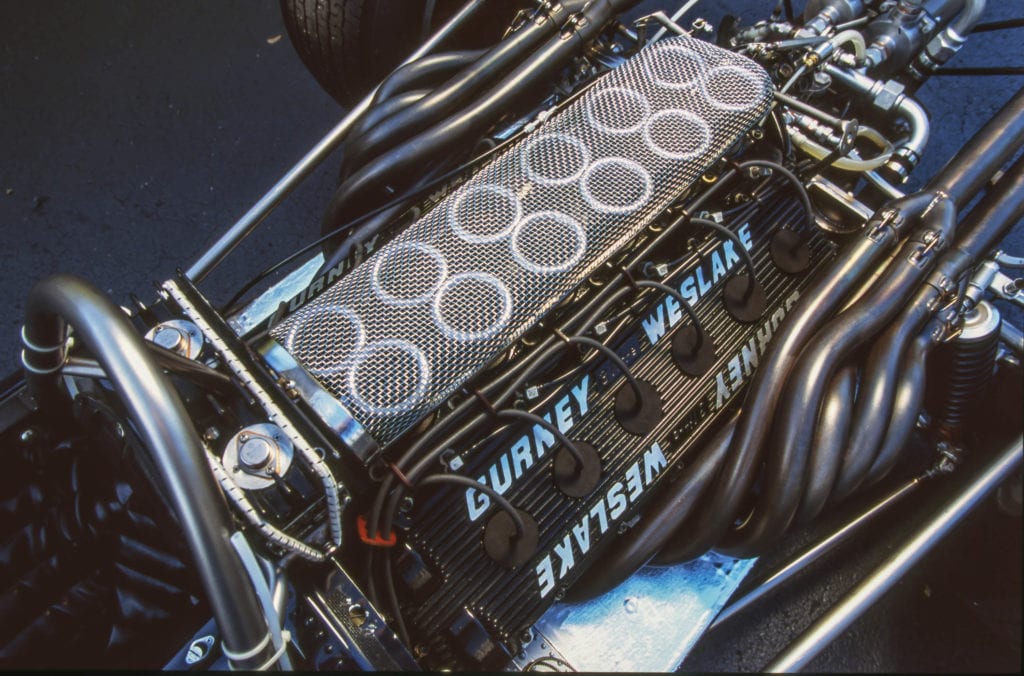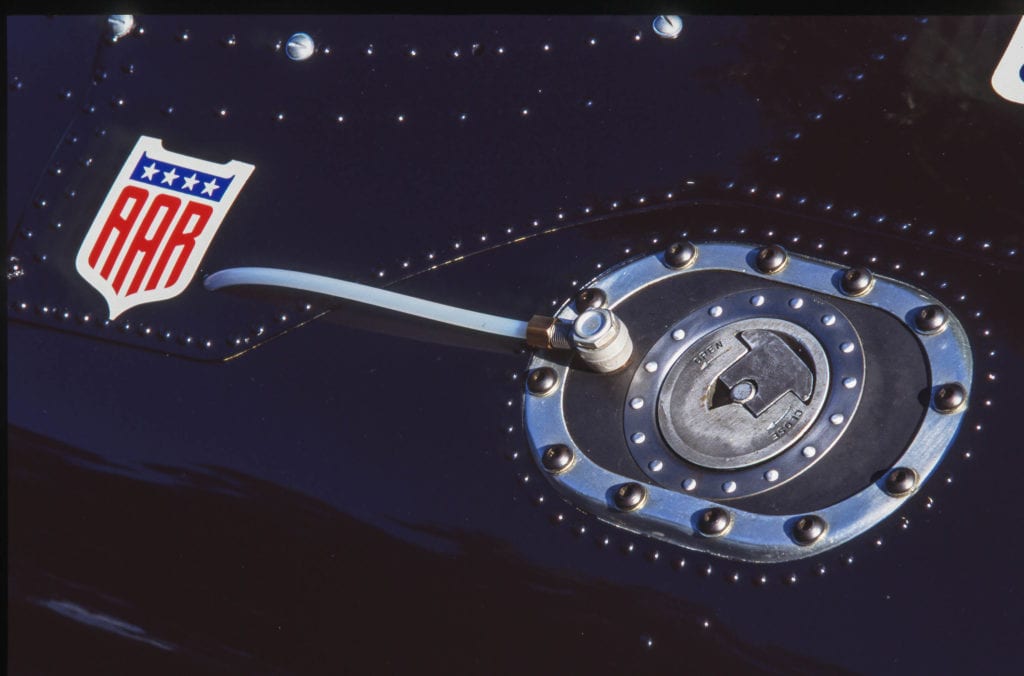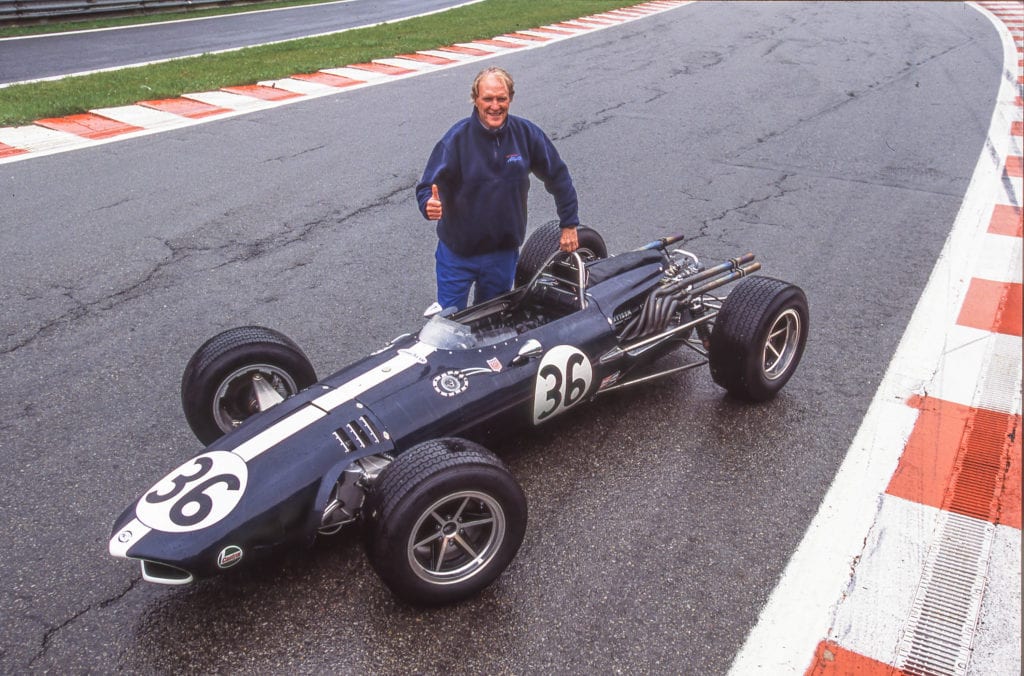Dan Gurney’s All-American Week At Le Mans and Spa, 50 Years Ago

Dan Gurney’s All-American Week At Le Mans and Spa, 50 Years Ago
By John Lamm
(Revs Institute is re-publishing this story, which first ran in June, 2017, as a tribute to the late Daniel Sexton Gurney, whose legendary career as a professional race-car driver, team owner, and constructor has left an indelible mark on motor racing. Gurney died Sunday, Jan 14, aged 86, in California of complications from pneumonia.)
Track and field had Jessie Owens. World Cup skiing had the Mahre twins, swimming Michael Phelps and tennis the Williams sisters. Automobile racing had Dan Gurney.
Enlarge
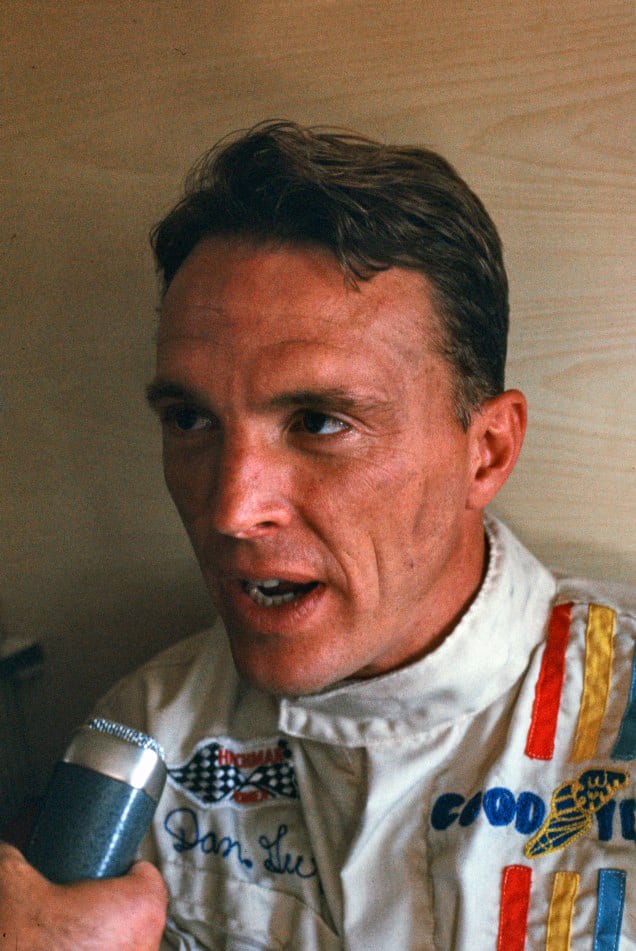
They are Americans who took the Stars and Stripes overseas and victoriously planted it in foreign soil.
Gurney, the consummate Californian, did it twice in two consecutive weekends, exactly a half-century ago. Teamed with Texan A.J. Foyt, Gurney won France’s 24 Hours of Le Mans on June 10-11, 1967. He followed that on June 18 by winning the Belgian Grand Prix at Spa. Gurney’s were the first back-to-back wins in two of Europe’s greatest races since his good friend and fellow American Phil Hill did it six years earlier. Nobody has done it since.
Enlarge
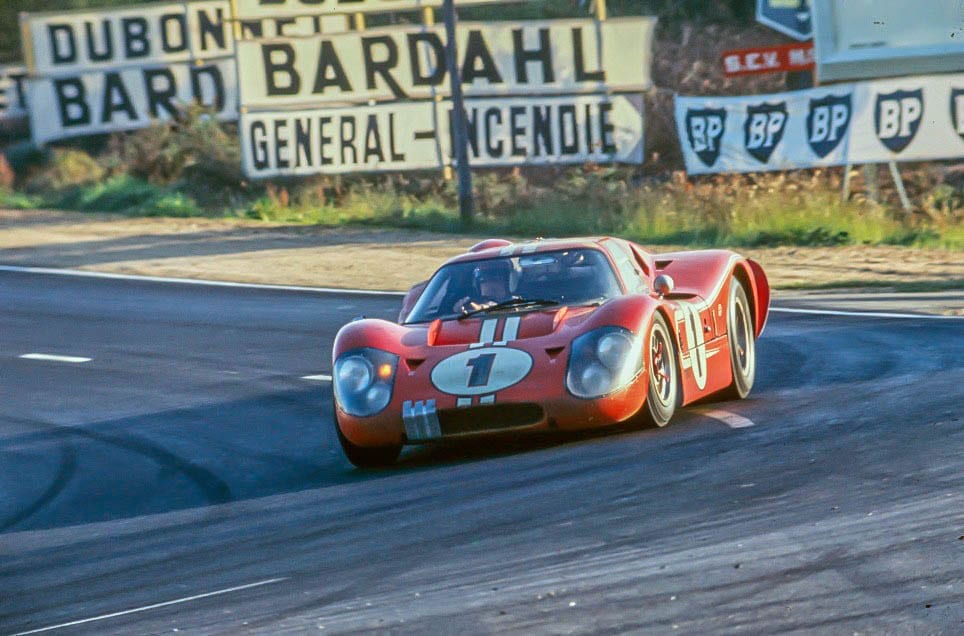
Both cars in Gurney’s wins — the Le Mans Ford GT40 and the AAR Formula 1 Eagle at Spa — were American designed and built. After its 1-2-3 finish at LeMans to vanquish Ferrari in 1966, for 1967 Ford created a new GT40, the MK IV. It was a mechanical mélange of a honeycomb aluminum structure wrapped with aluminum skin.
The car “fit, absolutely,” Gurney, now age 86, recalls. “It was very, very comfortable. The cars were heavy for their size and purpose, and the 427-cubic-inch V8 was tuned to make probably 450-475 horsepower. I was told it had a gearbox that alone weighed 300 lbs.”
After six prior losing appearances at Le Mans, Gurney realized that fellow American Briggs Cunningham, though past his prime, usually finished ahead of him. “What I realized was that it was not a race, but an endurance contest,” he recalls. “To a race driver that’s pretty hard to realize.”
Enlarge
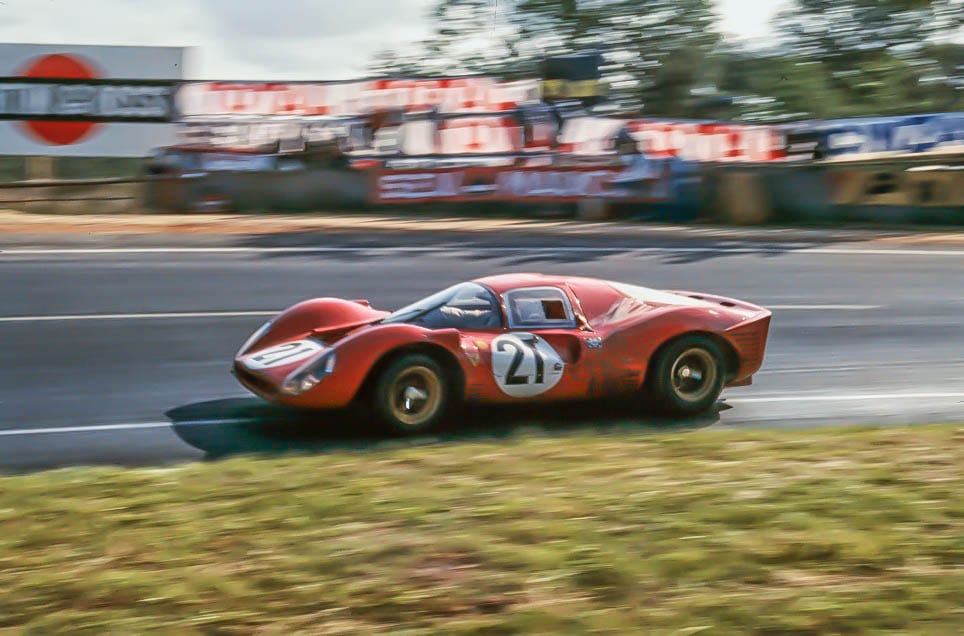
Conventional wisdom among journalists and competitors was the hard-charging Gurney and Foyt would run true to form as the rabbit that would draw the Ferrari 330 P4s into a fight, the Italians breaking in process. Then one of the remaining nine Ford GTs (MK Is, MK IIs, and MK IVs) would be primed to win.
Just the opposite happened. All the Fords but two MK IVs dropped out, three in one accident just after 3:30 am. Gurney and Foyt motored on conservatively, sticking to their new plan.
Enlarge
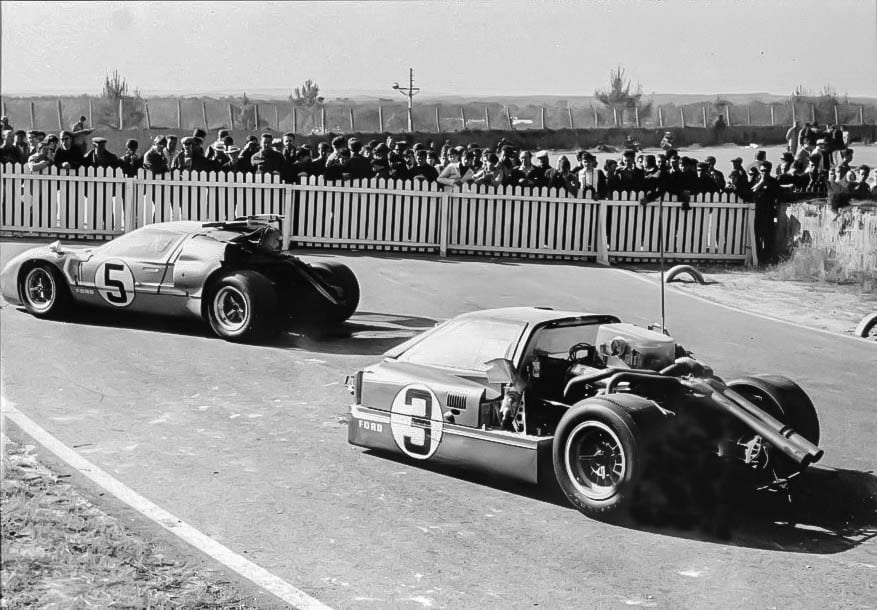
Mike Parkes in a Ferrari 330 P4 repeatedly challenged Gurney. “But he couldn’t pass me,” Gurney recalls “Even when he was in my draft I had a few miles per hour on him, but when I’d back off he’d catch up and was back there blinking his lights at me. This went on for four or five laps. I wanted to race him, but I didn’t compromise.
“Finally, leaving Arnage (a famed corner on the track), I pulled over onto the grass and stopped. He did the same. I just sat for about 10-12 seconds. Finally he couldn’t stand the pressure and took off and left. I reverted to my pace and kept going. Within about four laps, I caught him, passed him and never saw him again.”
Enlarge

Enlarge

Gurney and Foyt finished four laps ahead of Parkes and Ludovico Scarfiotti in the Ferraris. On the winner’s podium, Gurney was handed a bottle of Moët & Chandon champagne. He shook it and sprayed the crowd. A new race tradition had begun.
A week later he had left the straightaways of Le Mans for the high-speed corners of Belgium’s Spa-Francorchamps circuit. His car, one of 18 starters in the Belgian Grand Prix, was the All-American Eagle with its Weslake V12 and an eagle-like pointed nose leading to a smooth, svelte body. (The car is part of the Collier Collection at Revs Institute in Naples, Fl., though it’s now on loan to the Peterson Museum in Los Angeles for a Gurney retrospective.)
The car was actually an adjunct to a Goodyear-sponsored shot at winning the Indianapolis 500. When Gurney and Carroll Shelby agreed to build an Indy car for Goodyear, they fit an F1 machine in the same contract.
Enlarge
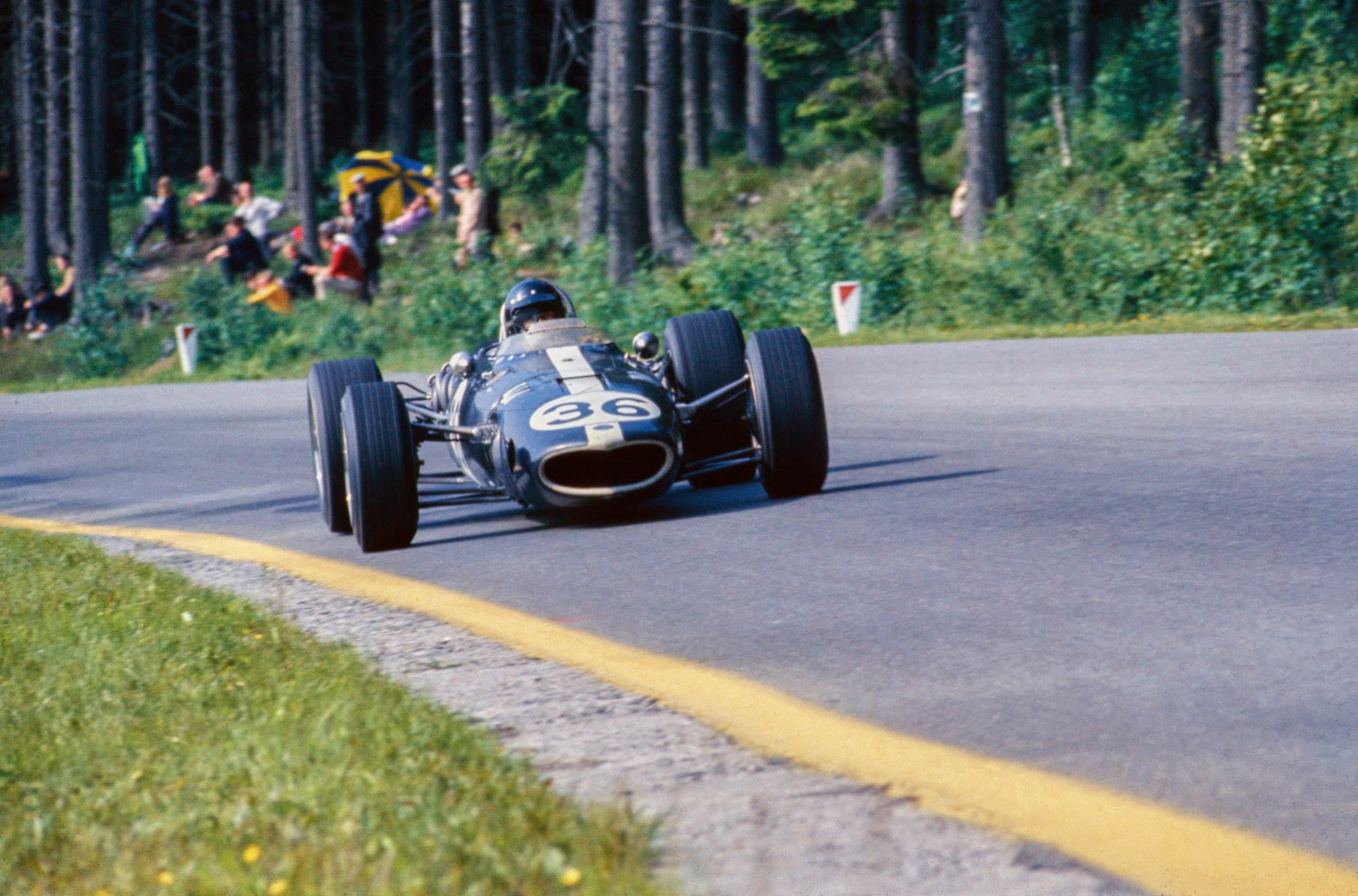
Enlarge

Len Terry — who penned the famous Jimmy Clark Indy-winning Lotus 38 — did the design. A tidy aluminum monocoque tub surrounded the driver with 45 gallons of high octane gas. Out back was Harry Weslake’s 3.0-liter 48-valve V12 with about 396 bhp. To save weight, Gurney’s car used structural titanium plus a magnesium monocoque: hence its nickname, the Ti-Mag car.
“With magnesium you could get a flat tire, have the chassis rub on the ground, catch on fire and you’d never put it out,” Gurney explains. “It’s like an incendiary bomb.”
Did he think about that danger? “You’d better believe it,” says Gurney, without pause. “That’s one reason I didn’t have a seatbelt. You hoped to be thrown out” if the car crashed. “It wouldn’t help your legs, but at least you wouldn’t be singed quite as much.” Times were different then.
Gurney was second on the grid next to the Lotus-Ford of Jimmy Clark, who led at the start. It was give-and-take, with Gurney battling Clark, then Jackie Stewart in a BRM. But the All-American Eagle prevailed. Gurney set a new race lap record of 148.8 mph and a best-ever race average of 145.9 mph.
Enlarge
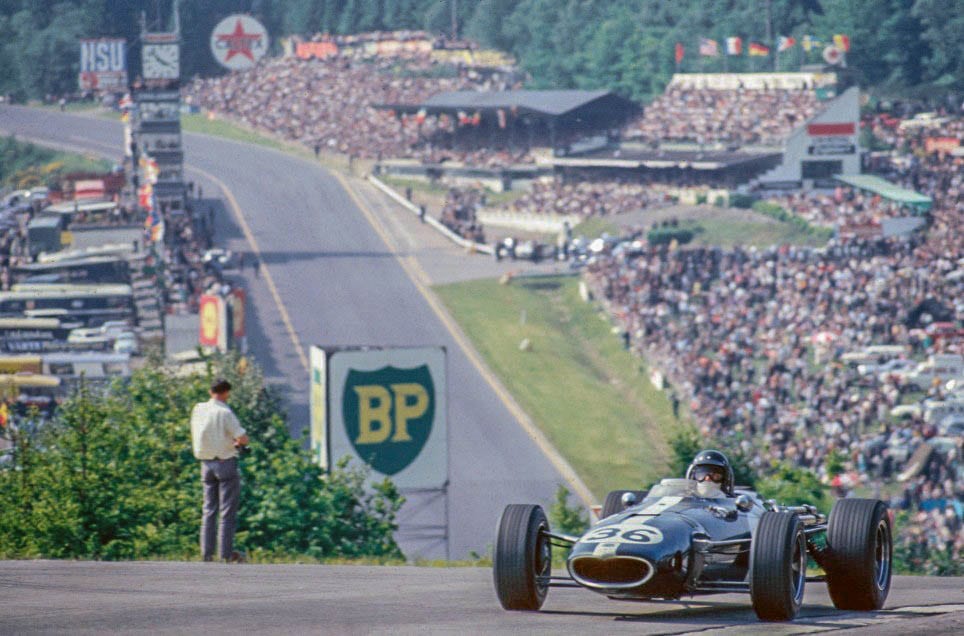
After the ceremonies at Spa, Gurney was helicoptered to a crowded soccer stadium where more fans awaited. Many were GIs, an important element of the Eagle fans in Europe.
Enlarge
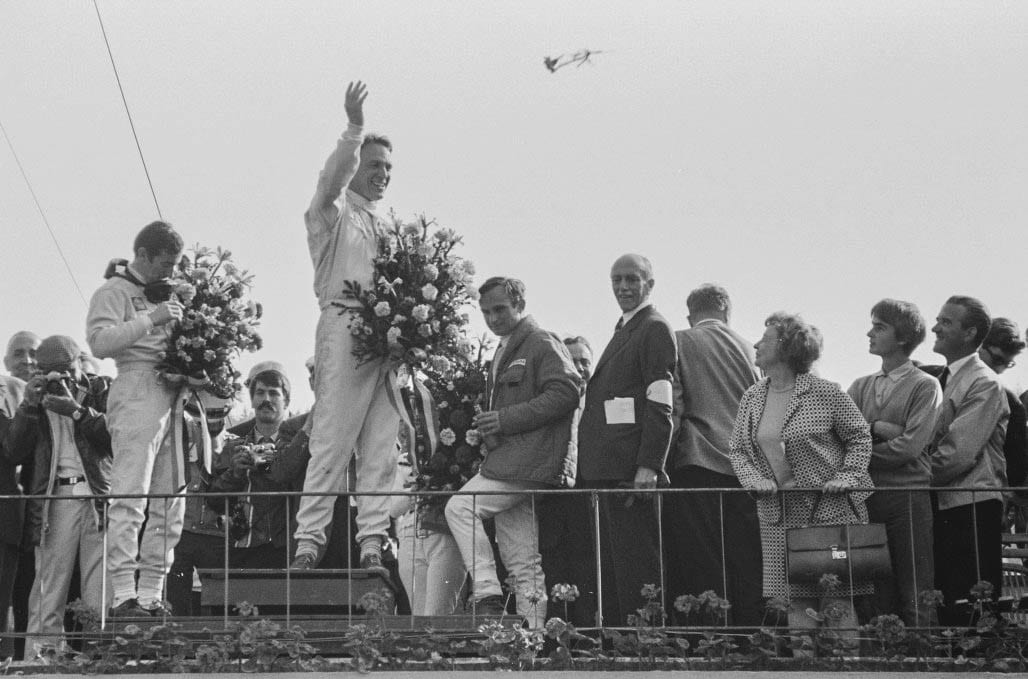
Reminiscing later, Gurney explained, “Spa is the granddaddy of all high-speed road circuits. There’s the great history behind it. The famous teams of the 1930s and 1950s ran there. …Winning at Spa is something they can’t take away from you. Flying home after that, as the plane took off I thought to myself, ‘Okay, we’re in the history books. If this plane goes down now it’s okay.
####

